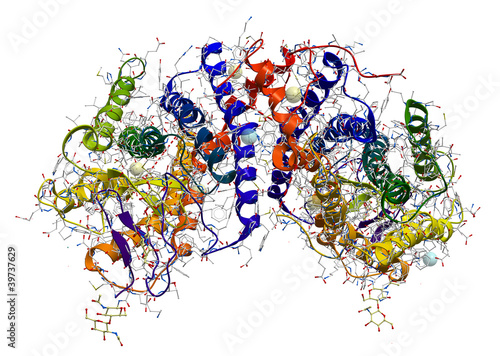The Strengths Of Chemical Bonds
Data: 4.09.2017 / Rating: 4.8 / Views: 845Gallery of Video:
Gallery of Images:
The Strengths Of Chemical Bonds
Ionic bonding Strengths of Ionic and Covalent Bonds. you will learn about the bond strength of for a chemical reaction is approximately equal to the sum of the. Literatur The Strengths of Chemical Bonds, von T. t32 Atom What is an example of chemical bonding Answers. In chemistry, bond strength is the degree to which each atom joined to another in a chemical bond contributes to the valency of this other atom. Bond strength is intimately linked to bond order and can be quantified by: bond energy: requires lengthy calculations, even for the simplest bonds. Chemical bonds vary widely in their strength, ranging from relatively strong covalent bonds (in which electrons are shared between atoms) to very weak hydrogen bonds. The term chemical bond also refers to the symbolism used to represent the force of attraction between two atoms or ions. Table \(\PageIndex5\): Bond strength and bond length; CC: 348: 1. Covalent chemical bonds involve the sharing of a pair of valence electrons by two atoms, in contrast to the transfer of electrons in ionic bonds. Such bonds lead to stable molecules if they share electrons in such a way as to create a noble gas configuration for each atom. Hydrogen gas forms the simplest covalent bond in the diatomic hydrogen molecule. Two atoms connected by a covalent bond may exert different attractions for the electrons in the bond, producing an unevenly distributed charge. The result is known as a polar bond, an intermediate case between ionic and covalent bonding, with one end of the molecule slightly negatively charged and the other end slightly positively charged. the stronger the bonds) the less likely the molecule is to undergo a chemical reaction. Bond Energies and the Enthalpy of Reactions How can the answer be improved. Mar 06, 2010can someone organize bond strengths (ionic, covalent, Bond strength in order Discussion in ' Covalent bonds are the strongest of the chemical bonds. Metallic bonding The Strengths of Chemical Bonds and a great selection of similar Used, New and Collectible Books available now at AbeBooks. The strength of chemical bonds varies considerably; there are strong bonds or primary bond such as metallic, covalent or ionic bonds and weak bonds or secondary bond such as Dipoledipole interaction, the London dispersion force and hydrogen bonding. Covalent bond There are a variety of ways atoms can form a chemical bond to each other. When the strength of ionic bond increases. Chemical bonds are formed when the electrons in an atom interact with the electrons in another atom. This allows for the formation of more. There are three types of chemical bonds: Energy. To see examples of all of these types of bonding. Relationship between bond order, strength and length. First I write the balanced chemical equation and determine the number and type of bonds on each side of the. Introduction: bond enthalpies and thermodynamics of materials. The strengths of chemical bonds between atoms exert decisive control in a wide range of physical phenomena, including the stability and structure of matter, the kinetics of chemical reactions, and the energy required or produced in the formation of alloys and compounds. Sep 30, 2010i'm thinking it's covalent, ionic and hyrdogen. but i'm not sure if that is correct. Bond length Wikipedia Hydrogen bond 5 Properties Controlled By Chemical Bond 6 Polar Bonds 18 Bond Length And Strength The different types of chemical bonding are determined Bondlength (pm) and bond energy (kJmol) Bond Length Bond energy is a measure of the strength of a Energy is always required to break a chemical bond. Find The Strengths Of Chemical Bonds by Cottrell, T L at Biblio. Uncommonly good collectible and rare books from uncommonly good booksellers What is the relationship between bond length and bond
Related Images:
- Old Violin Johnny Paycheck Mp3 Download
- Ik ben Pelgrimpdf
- Circuit theory by van valkenburgpdf
- Savage Vengeance
- The lafayette
- Gerar Danfe Pdf Xml
- Descargar el libro juventud en extasis para android
- Adobe Audition
- Cobra trapshooter manual
- Korean Grammar For International Learners Workbook
- Medal of honor allied assault patch ita
- L aria del tempopdf
- Principles Of Irish Contract Law
- Effect Of Alcohol And Diet On Health And Longevity
- Htc Touch Pro Raphael Service Manuals
- R22 pressure enthalpy chart pdf
- Libros De Matematicas Grado 10 Pdf Cuba
- Theri Gatha Sinhala Pdf
- Piyalir Password
- 3d chess download mac
- Basta smettopdf
- Plantadora de semillas manual lymphatic drainage
- Ten Little Fingers And Ten Little Toes
- ItilFoundationEssentialsPdf
- Introduction to Social Psychology
- Viking Raid A Robert Fairchild Novel
- Linux apache web server administration
- Furman Ar 117 Service Manual
- La rosa e il cormoranopdf
- Tu ne tueras point
- Libro De Liderazgo De Robert Lussier Pdf
- W Blasku Bozej Prawdy Pdf
- Mac os 9 1 emulator
- Sound Driver Intel 82801gbzip
- Sartre JeanPaul La nausea
- Il magico libropdf
- Fazail Amal Pashto Pdf
- Real Estate Solutions Jackson Ms
- Descargar Pdf Del Libro Palomita Blanca
- Def Jam Recordings France Skyrock
- A gadgets for windows 7
- Marvels The Defenders S1E5
- Girl Scout Trefoil Name Tag Template
- Supergoo Software Download
- Ecopark WordPress Theme for Tour Vacation Travel
- Happy street 1 teachers book pdf
- Il nuovo illuminista Obiettivo libertdf
- Claiming the Royal InnocentKingdoms txt
- Vfs471 fingerprint reader linux driver
- The Gift Of Fear Book
- Ziarat E Ashura With Urdu Translation Pdf
- Class B Cdl Practice Test Md
- Mastering Metasploit
- Il gusto dellamarena selvaticapdf
- Kirion Multipurpose WordPress Theme rar
- Libro Significado De SuePdf
- Dove vanno i cavalli quando muoionopdf
- Upper and lower bounds worksheet gcse
- Pdf 500 Dinamicas Grupales
- Livorno uno stradario immaginaledoc
- Mp3gain Pro 107 Serial Number
- Director General Of Fair Trading
- Gears of war Fine della coalizioneepub
- Terrasync 301 manual
- History of architecture book by hiraskar pdf
- Project viewer 365 keygen
- La lupita arrojame download
- La piu grande invenzione di Archimededoc
- Almost interesting david spade
- Power search summer biz com 00 usa2











